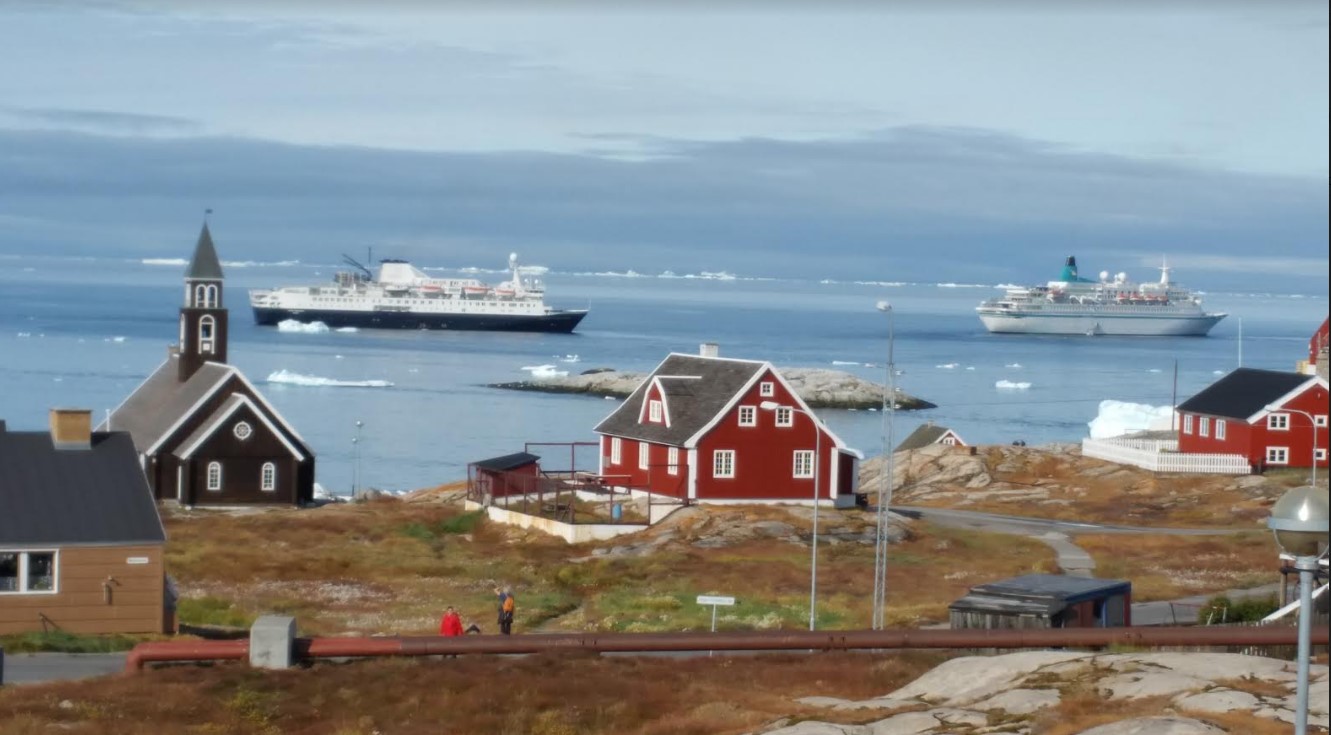To recall sailing the Northwest Passage is to dream of doing it again
[Last year, with Adventure Canada, Sheena and I sailed Into the Northwest Passage. Next year, in September 2017, we will reverse our route and sail Out of the Northwest Passage. Some of our stops will be different, but others we simply cannot miss — among them Ilulissat, where a river of ice produces the largest icebergs in the northern hemisphere. To remember is to anticipate.]
DAY 3 — SUNDAY, AUGUST 28, 2016
Whales! Voyagers saw humpback whales during a spectacular, two-hour Zodiac
ride among the icebergs of the Ilulissat Icefjord. The cavorting sea mammals
provided the highlight of the day for most voyagers, though several were
mightily impressed when they saw an iceberg calve off from the front of the
icebrae.
For some, the day’s highlight came earlier, after a short Zodiac ride and a long
 hike through the town of Ilulissat. Walkers proceeded then along the boardwalk
hike through the town of Ilulissat. Walkers proceeded then along the boardwalk
to a hilltop vantage point that looks out over the ice-choked fjord. The ice-river,
which flows form the Greenland Ice Cap, is believed to have spawned the
iceberg that sank the Titanic. It flows at a remarkable twenty to thirty-five
metres per day, and calves off eighteen to twenty million tons of ice daily—or
over twenty billion tons each year.
The Ocean Endeavour had arrived at Ilulissat in a worrisome fog. But as passengers disembarked and started through town, the fog lifted and the day
turned sunny and bright. Ilulissat itself, with a population of 4,000, is the most
visitor-oriented centre in Greenland. But two other passenger ships were in the
harbour, and taxis to and from the start of the boardwalk were few and far between. Also, because today was Sunday, several of the shops opened later
than they might have—though several passengers managed to return to the ship carrying bags.
A number of people found time to visit the museum, which is devoted to explorer and ethnologist Knud Rasmussen. With his fifth Thule Expedition, he showed that the Inuit , scattered now from Greenland to western Canada and beyond, even into Siberia, constitute a single people.
Later, after dinner, Susan Aglukark picked up this theme with a stellar
presentation mixing song and story. She talked of how her parents’ generation bore “the brunt of the burden of change.” They were the last born into
traditional Inuit ways, she said, noting the psychological effects of rapid change,
and of no longer growing up deeply embedded in an extended family.

